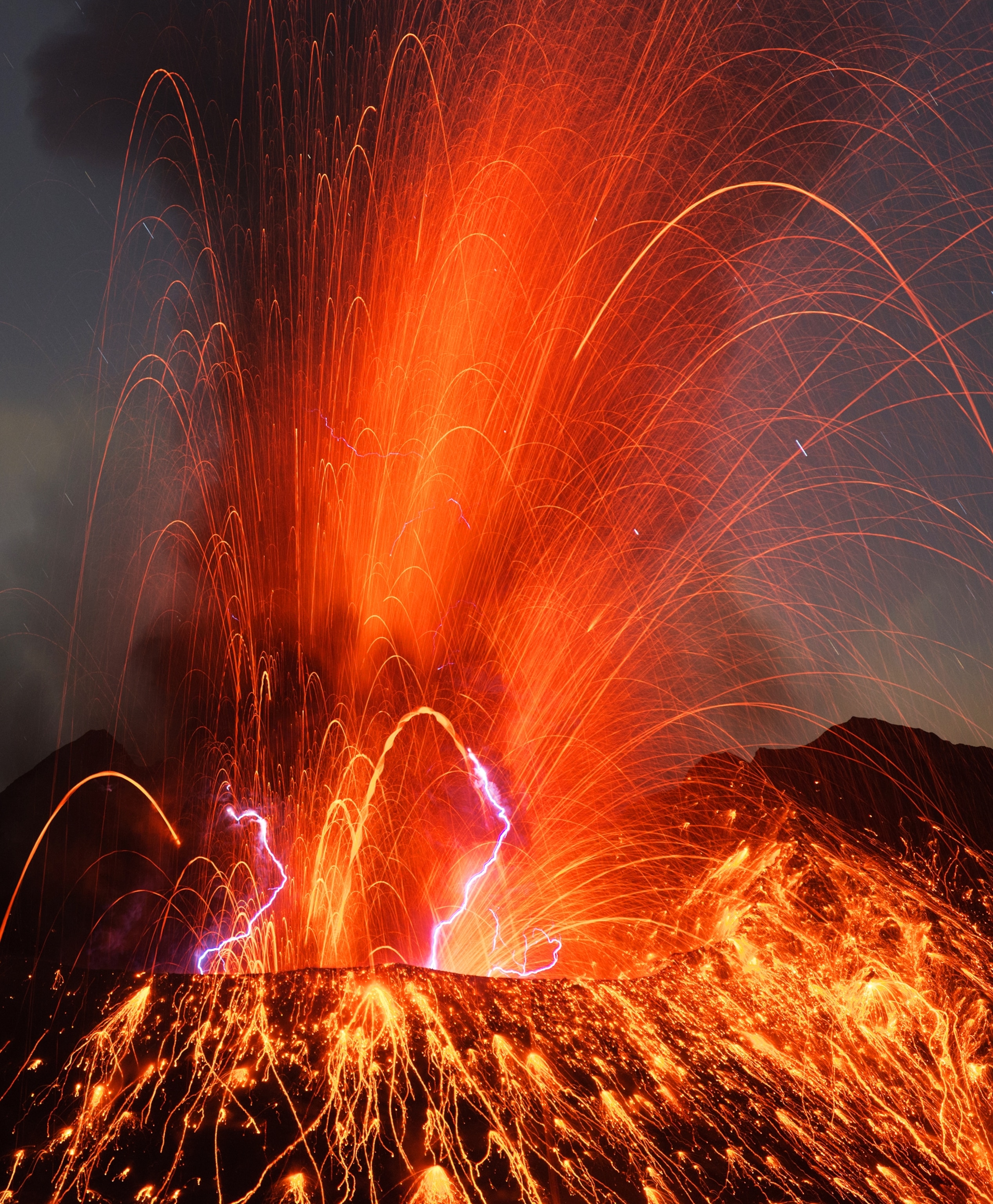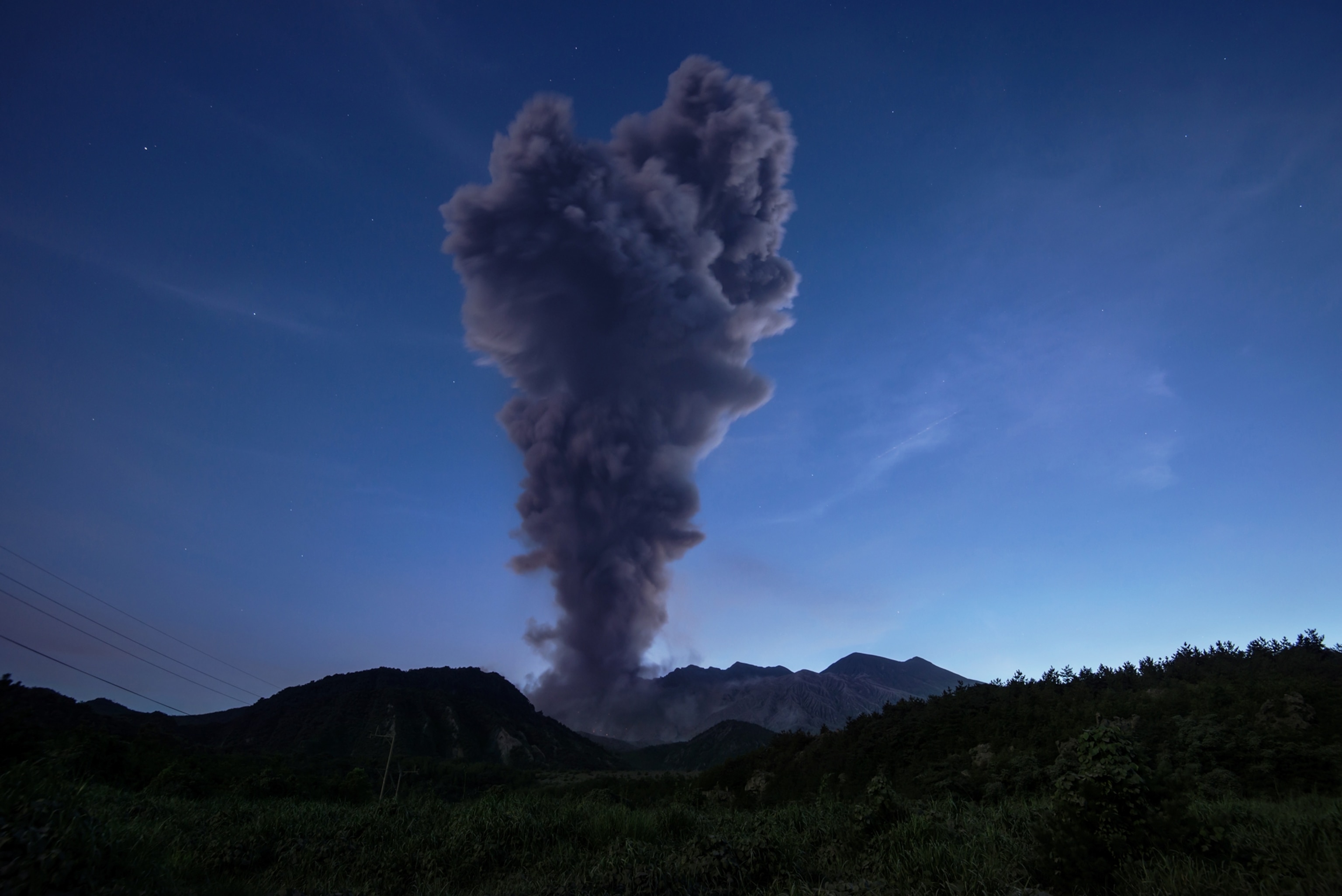
Pictures: Sakurajima Volcano Shoots Lava Skyward
Ongoing eruptions could escalate, threatening the Japanese city of Kagoshima.
Lava spewed several hundred feet high during an exceptionally active phase of the Sakurajima volcano in southern Japan last month.
Bolts of lightning crackled at the same time, ignited by electrostatic charges in the ejected ash.
As one of the world's most active volcanoes, Sakurajima can erupt more than a thousand times a year.
It's also one of the most accessible volcanoes. "You can get off a plane, rent a car, and be there in half an hour," says Tom Pfeiffer, a volcanologist and photographer who captured these images. "In three or four hours, there's a good chance to see really beautiful eruptions."
Sakurajima first erupted about 13,000 years ago inside a much older volcanic crater. Today its cone rises 3,664 feet (1,117 meters) above Kagoshima Bay (map) off the southern coast of the island of Kyushu. (Related: "New Giant Volcano Below Sea Is Largest in the World.")

It frequently belches out a billowing column of steam and ash, which rises vertically when there's no wind. That was the case at the end of July this year, when Pfeiffer took this shot (above) of ash rising about 12,000 feet (3,657 meters) into the air.
The ash slowly spread into the shape of an umbrella and then began to fall onto the flanks of the volcano. "It was becoming very unpleasant," says Pfeiffer. "I had to evacuate."
If the wind is blowing westward, the ash settles on the city of Kagoshima, located just five miles (eight kilometers) away across a narrow stretch of water.
So far, it remains a nuisance rather than a serious problem for the city's 600,000 residents. They sweep off their front steps, dust off their cars, and wear protective masks to keep from breathing in the ash.
But a large cloud could clog sewers, disrupt electronic transmissions, and cause roofs to cave in. "One inch of fallen ash is like two inches of water," says Pfeiffer. "It's a heavy load." (Related: "Pictures: Mexico Volcano Spews Ash 2 Miles High.")
There's also a larger danger living so close to such a cantankerous peak. A large eruption could completely transform the landscape.
That's what happened here more than a century ago during Japan's biggest volcanic event of the 20th century. Sakurajima was then an island. But on January 12, 1914, it erupted so massively that a river of lava reached Kyushu. That hardened into a bridge of land and turned the volcano into a peninsula.
Experts now think the magma chamber in the bowels of Sakurajima is about 90 percent as full as it was in 1914. That means another large eruption could be percolating. (Related: "Volcano's 'Scream' Before Eruption Explained.")
As local volcanologists monitor the crater's sighs and tremors, Kagoshima residents remain on alert. It's the price they must pay for their spot on the Pacific Ocean's fiery rim and their front-row seat at one of nature's most spectacular light shows.





